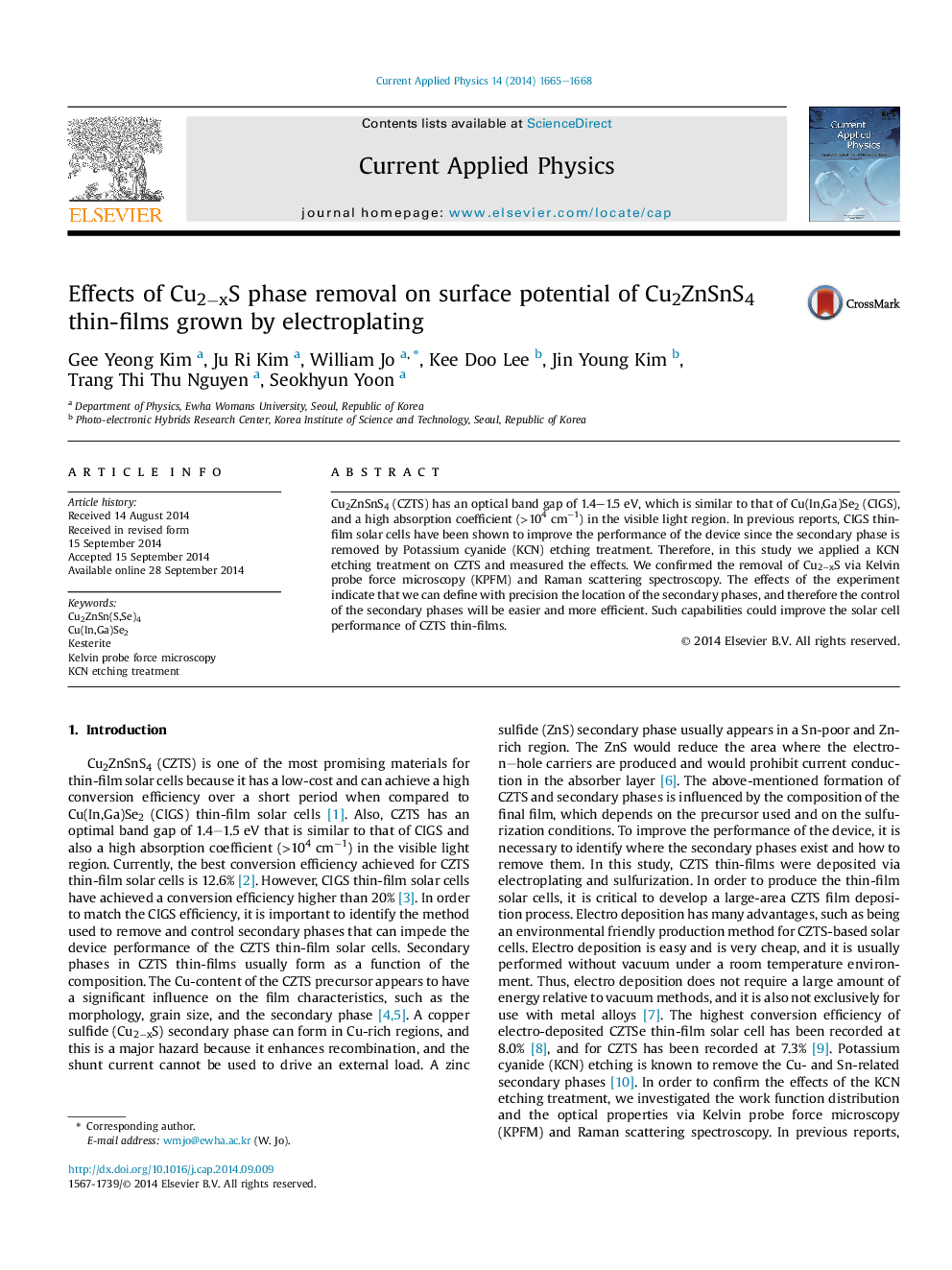| Article ID | Journal | Published Year | Pages | File Type |
|---|---|---|---|---|
| 1785903 | Current Applied Physics | 2014 | 4 Pages |
•We confirmed the removal of Cu2−xS with applying KCN etching by Raman and KPFM.•The work function distribution of the CZTS main peaks narrowed after etching.•We can define the location of the secondary phases.•Therefore, the control of the secondary phases will be easier and more efficient.
Cu2ZnSnS4 (CZTS) has an optical band gap of 1.4–1.5 eV, which is similar to that of Cu(In,Ga)Se2 (CIGS), and a high absorption coefficient (>104 cm−1) in the visible light region. In previous reports, CIGS thin-film solar cells have been shown to improve the performance of the device since the secondary phase is removed by Potassium cyanide (KCN) etching treatment. Therefore, in this study we applied a KCN etching treatment on CZTS and measured the effects. We confirmed the removal of Cu2−xS via Kelvin probe force microscopy (KPFM) and Raman scattering spectroscopy. The effects of the experiment indicate that we can define with precision the location of the secondary phases, and therefore the control of the secondary phases will be easier and more efficient. Such capabilities could improve the solar cell performance of CZTS thin-films.
